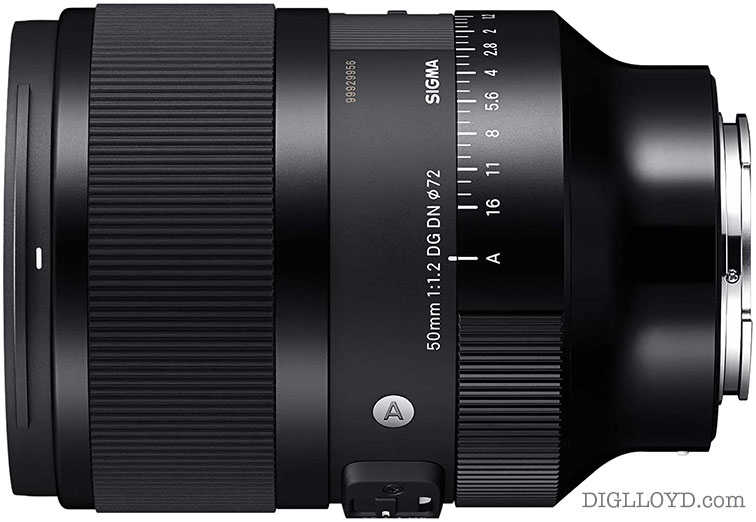Is the Full Frame DSLR the New Medium Format? What do DSLRs Lack?
The photography market is experiencing its most significant reshuffle since the advent of digital cameras. Existing dominant players have everything to lose: by the end of 2014 the market might look very different from today.
Current DSLR technology is on pause, with the Nikon D800 and Nikon D800E representing state of the art in pixel resolution and pixel quality for well over a year now. Worth noting is that neither Canon nor Nikon has introduced a top line model for a long time now (no Nikon D4x, no Canon EOS 1Ds Mark IV); this reflects market realities.
As per yesterday’s existential commentary, one must ask what the future of the DSLR is. Because in its present form, it is heavily pressured by increasingly high quality APS-C compacts: smaller, lighter, more fun, superior shooting in many ways, cheaper, and so on. Good enough for 90% of the market to be sure. And by 2014 that will extend to many more full-frame compact cameras (the Sony RX1/RX1R being an early arrival).
The crop of 2013 APS-C mirrorless cameras isn’t quite there in breadth or depth or usability and so on, but a year from now those gaps will shrink to levels that cross a dangerous threshold for the DSLR market share.
As for APS-C DSLRs, they have increasingly fewer reasons to exist (all the negative aspects of DSLRs and yet a sensor no better than APS-C mirrorless along with no EVF and bulky lenses)—relegating them more and more to the dinosaur bin. The DSLR market enjoyed a “soccer mom renaissance” a few years ago; that’s over and done with. Though Nikon and Canon will surely kick the can down the road until the toes bleed.
What keeps the DSLR relevant in the face of the mirrorless camera onslaught?
This question is posed in general market terms; obviously the lens lineup for Nikon and Canon DSLRs is impressive and certain uses and users require such things. But this is not the bulk of the market (how many people need a 200mm - 800mm super telephoto?).
Update: the numbers for Jan - June 2013 suggest that interchangeable lens mirrorless cameras have lost ground relative to DSLRs. This undermines the argument here, but I’m sticking to it as a trend which might play out very differently by 2014 with the arrival of new cameras designs including full-frame.
Clear image superiority
DSLRs must re-assert technical image quality superiority: the quality of APS-C mirrorless cameras has encroached uncomfortably close to full-frame* DSLR quality, or perhaps even exceeded it for certain DSLRs versus certain compact cameras. It doesn’t matter that DSLRs remain technically a little better (not always true!); DSLRs must be considerably and obviously better.
Sensor design must advance: possibilities include 60+ megapixel sensors. Or a true-color sensor design (the Foveon X3 concept) with 30 X 3 megapixels would certainly qualify, and lower the demands on optical quality.
DSLRs need lenses that deliver: higher pixel quality with 60+ megapixels means that the vast majority of lenses undermine any higher resolution that a high-res DSLR might deliver, oversampling still being a virtue of course. With the arrival of lenses like the Zeiss 55mm f/1.4 Distagon and Zeiss 135mm f/2 APO-Sonnar—and some lenses from Nikon and Canon also qualify—lenses that make 60+ megapixels meaningful are coming, but more are needed.
On the other hand, if a true-color sensor (say 25 X 3 megapixels) comes online, then the demands on optics are less extreme and the player (Canon?) with this technology would have a major advantage over a conventional sensor (existing lenses are good enough).
With new sensor technology and high-grade lenses, one might thus say that full-frame* DSLRs will become the new medium format with its various connotations, including system cost and market penetration relative to the next level of camera.
Adopt key features of mirrorless
Nikon and Canon DSLRs lack one key item: a high resolution electronic viewfinder (EVF). This is not to say the optical viewfinder should be eliminated but rather that the EVF and optical viewfinder complement each other.
An EVF is far superior to a DSLR optical viewfinder for some tasks, like manual focus (focusing screens in modern DSLRs are terrible for manual focus). An EVF enables precision focusing (via zooming in), better support for eyesight limitations, 100% view/framing, and all the electronic trappings one expects and has with a mirrorless camera.
EVF signal support is internally present in DSLRs (the video signal to the rear LCD), yet that signal could just as well be routed to an EVF or any display mounted in the camera hot shoe or otherwise. Building one into the camera along with an optical viewfinder is even more appealing, but even the external option is strangely lacking. Inertial thinking perhaps.
Next, if any inexpensive point and shoot can have a high quality rear LCD, then a DSLR ought to have a Retina-grade rear LCD as with the Apple iPhone. Because high resolution work demands some way to assess its quality and accuracy while shooting, even ignoring the pleasure in using such a screen.
Beyond these and similar modernization updates, it gets difficult for DSLRs: for lens compatibility the mount cannot be changed and hence the DSLR is constrained (flange offset at the least). And while the optical viewfinder could be removed (e.g., Sony Alpha A99), that really becomes a mirrorless cameras that mounts DSLR lenses. Which except for compatibility is not a win (compromised large and bulky lenses). Which means that DSLRs must really offer something sensational in the image quality department, somehow.
Which leads us to a longer term view: the full-frame mirrorless camera with ultra-fast sensor-based focusing and a new lens mount supporting smaller lenses not needing a mirror box: where will the DSLR stand then? Perhaps it then becomes more of a lens compatibility platform competing against an all new full-frame rethink of the entire concept.
* Full-frame DSLR = 36 X 24mm sensor.
Reader comments
Andrew T writes:
Interesting analysis. I think that less expensive medium format is a great complement to mirrorless, since mirrorless and DSLRs are so close. I use a Ricoh GR (long-time GRD fan), Leica X Vario (forget what the naysayers say) and Pentax 645D. I shoot most often with the GR and X Vario since they are so light and portable and frankly very good. But when I want a perfectly clear landscape picture or I want to simply capture pretty much what my eye sees I use the 645D.
Most medium format digital cameras are very expensive, and granted they are large and heavy, but unless one needs telephoto lenses they simply offer superior IQ. Those pixels matter. I would be curious to see how large a mirrorless 645D would be. Probably not that big.
I tried to sell my 645D for lack of use, but given it's cost and resale value I'd rather keep it and put it to use. The first time I took it out again I was stunned. Made my mirrorless pictures look cheap in comparison.
I will simply not buy another DSLR ever again.
DIGLLOYD: Interesting last statement.
The combination is noteworthy: convenience has a high priority and much of the time quality is more than ample (and improving!), but at other times only peak quality will do and this is worth some additional hassle (expense, bulk, etc). But what of a full-frame compact with 60 megapixels and a lens optimized for the sensor? For such a camera, is it a year or two or three from now? How would the Pentax 645D or a D800 fare by comparison?
Medium format sensors (generally CCD) without an anti-aliasing filter and optimized for low ISO have a terrific quality. And of course there is a large gap between an APS-C compact of 16 megapixels and a Pentax 645D with 40 megapixels. But this is a current concretized pairing that will only improve in favor of the compact cameras.
Yes, I’d really like a mirrorless medium format digital camera too. BTW, the Pentax 645D sensor is terrific, but I am much less impressed with the lens options, as compared with the lovely Leica S glass. Too bad 'S glass' cannot be used on the 645D.
All of this emphasizes the point that DSLRs must raise their game to medium format quality levels or risk being marginalized by mirrorless cameras that can do most jobs as well or nearly as well, but cheaper/smaller/lighter/more fun. There is a “good enough” point at which convenience trumps slightly better image quality: that is the risk for DSLRs and I feel it myself every time I am in the field lugging 20 pounds of gear around: it is not a plus.
And thus the threat to DSLRs from compact cameras pushes the threat up the chain: next-generation DSLR sensor technology could arrive that is fundamentally superior (as in a true-color sensor design) along with lenses that truly are medium format quality (Zeiss 55mm f/1.4 Distagon and Zeiss 135/2 APO-Sonnar). That could give cameras like the Pentax 645D and Leica S a serious run for their money, since advanced sensor technology could nullify the “big sensor quality” advantage. Even last year, the Nikon D800 to Leica S comparison I published makes a strong case that next-gen DSLR sensors with higher resolution and better lenses are a force to be reckoned with. If not right now, then soon.
I don’t have a crystal ball, but one thing is clear: the market cannot support a system that does not have distinct superiority over the next-lower-grade format (excepting speciality uses with no good alternatives at present, like sport and wildlife shooting with long glass). That is the risk for both DSLRs and medium format.
Roy P writes:
I think you need to extend your line of thinking one more step. Both the RF and the DSLR are finished as camera paradigms. With both the speed (as measured by the time lag between an action and its portrayal in the EVF) and resolution of the EVF dramatically improving, it is hard to think of a reason for an OVF. The mirror is a legacy concept that increasingly becomes a liability with larger sensors and higher resolution. Time to dump it too. I’m sure fans of the Leica M system (I used to be one) will vehemently disagree, but the M started living on borrowed time a year ago, when the APS-C mirrorless EVF cameras started taking off as universal bodies for any lens (UBAL? UCAM?).
A true color sensor is not going to bail out the DSLR, because there is no reason why a true color sensor couldn’t be put in an mirrorless EVF camera. In fact, all the things you suggested for making the DSLR better, such as 60MP sensor, retina display LCD, etc., apply to mirrorless EVF cameras equally well.
What I expect to see happen in the next 2-3 years is a huge range of mirrorless EVF cameras in different form factors. One form factor could resemble a Nikon D4, for instance, in terms of its size, robustness, weather sealing, etc. Such a package would accommodate a massive battery similar to the one in a D4 and fast, powerful motors that could drive the Nikon pro-grade AF lenses for superfast action photography.
Another form factor could be something like the rumored NEX-9 that would be perhaps a bit larger than an NEX-7, but still much smaller and lighter than the Leica M. This would be for compactness, light weight and portability, autofocusing where superfast autofocus is not needed, and of course, manual focusing that will easily and vastly surpass the pathetic manual focusing capabilities the Leica M has to offer. Such an offering would likely usher the EOL for the RF.
In fact, we could see mirrorless bodies with medium format sensors that basically get Leica and Hasselblad out of the camera business altogether, and focus on building medium format lenses, like Rodenstock, Schneider, etc.
I think the future is all mirrorless in a wide range of form factors and capabilities. I think the RF, mirror, optical VF, DSLR, are all on their way out.
DIGLLOYD: It’s all about “gap parity”: a full-frame sensor maintains advantages over APS-C in total image quality as well as the longer focal length “look and feel”—similar to the difference between a DSLR and a medium format camera (the “large format look”). And the ergonomics of some specialty types of shooting and speed of autofocus are poorly served with today’s mirrorless cameras; can pros shoot football or baseball with mirrorless (yet)?.
A true-color sensor can come to APS-C or a full-frame DSLR and can maintain the same image quality gap while simultaneously encroaching on medium format; in fact it is medium format that might be most challenged (unavailability of the best sensor technology in big sensor sizes).
There will always be a place for the next higher quality grade. But I agree that a full-frame mirrorless camera system (with ample lens choices) further undermines the DSLR. And so how this all plays out is complex. Established lens lines and accessories will exert some influence in favor of the DSLR for some time to come, for some uses.
But ultimately the market demand is a problem: as evidence observe the lack of any new pro-grade body from Nikon or Canon in a long time. What happens if pro-grade DSLR gear sales drop by half? It could be a snowball effect. I don’t know the answer.
Having used the Leica M Typ 240 with its optical rangefinder and its EVF, I will say this: the rangefinder if adjusted accurately it is faster in many situations (though not all and not at very wide apertures). But perhaps this is because Leica only supports a low-res EVF and the aids for detecting peak focus are not really up to the task, at least not with the existing EVF. And because the Leica M EVF behavior has too many counterproductive behaviors.
As for manual focusing, I prefer it under a wide variety of circumstances, certainly I’ll take it any day over the focus creep problems with Fujifilm X. All this stuff has to mature and ergonomics matter a lot.
But an EVF does not really replace the optical viewfinder in a DSLR: the EVF flattens 3D perception that one can see through a DSLR mirror system: quite different perceptually. And to date all EFV units have display issues under certain adverse lighting*; an optical viewfinder is far superior in certain lighting conditions. While an EVF-only camera with a really good high-res EVF is very nice, it is not fully satisfying. Still, optical viewfinders cost a lot (good ones at least), hence there is price pressure to eliminate them.
* Updated September 2013: no longer true with Sony and Olympus 2.4MP EVF.
Jarek B comments on autofocus speed:
As a long time Nikon system user who has switched from a D700 (which I loved for its image quality) to a bunch of mirrorless cameras couple years ago and now to the M240, I agree with most of what you're saying. I also second another user's comment that "I will never buy a DSLR again".
I think that today the only real reason one would chose a DSLR boils down to essentially one thing: autofocus speed (being invested in lenses a close second, but overrated).
As much as I like the convenience and image quality of several mirror less cameras I owned / used, let's face it: the autofocus on cameras like Fuji X series, Sony NEX, RX1, etc. can be only summarized as "unusable" (at least for somebody who has young kids or enjoys active lifestyle). Autofocus speed (and accuracy) is for obvious reasons of PARAMOUNT importance to the whole picture-taking experience and results for the vast majority of camera buyers and I'm surprised that in 2013 we still have to deal with all the deficiencies. It's pathetic that I'm forced to use the M240 and its decades-old manual focus as the only reasonably small full-frame option with dependable (sic!) focusing.
From what I'm hearing OM-D is an exception and offer satisfactory focusing speed, but then you're dealing with a small sensor and all its disadvantages…
DSLRs are still superior to anything else out there where it comes to autofocus speed, and that remains a HUGE advantage. Not worth it for me, but still worth a lot to a lot of users. I believe that once this issue is solved, Nikon and Canon are in for some rude awakening. Sadly, they're not the ones trying to stay ahead of the game and instead are waiting for someone (Sony?) to eat their lunch...
DIGLLOYD: In some ways, autofocus can be every bit as good with the compacts: pinpoint autofocus on the Ricoh GR or Sigma DP Merrill have shown excellent precision and accuracy for me, which I can’t say in favor of the D800! But that is not focus speed in general, and they break down under some conditions and cannot track or lock on like a top-flight DSLR.
So lens selection and autofocus are indeed key differentiators at present, but what happens when phase detect AF is built right into the sensor as Canon seems to be doing?
See Dual Pixel CMOS AF will change the basic assumptions about Digital SLRs, where Canon seems to making a very strong statement. Might this not make its way into all cameras, perhaps being a superior technology DSLR or not? Perhaps even the best high-end choice? How it plays out could be interesting. Canon makes some interesting claims:
This is not just a new technology. It is a revolution that will significantly expand the possibilities of DSLR cameras.
- “The correct way to take photos is by looking through an optical viewfinder and shooting”
- “Live View is a subsidiary function, inferior to the optical viewfinder”
- “The DSLR’s movie mode is so difficult, as to be usable only by a professional”
Dual Pixel CMOS AF is a new technology that will cast aside these assumptions.
The entire surface of the sensor is lined with pixels composed of two photodiodes each, and the image plane phase-difference detection AF focuses using the phase-difference of the two parallax images.
Even when shooting with Live View, because it is phase-difference detection the AF is fast. Rather than pixels dedicated to AF, the pixels have both AF and imaging functions, all effective pixels can also be used for imaging. Now Live View Shooting will be a shooting method choice that is equal to optical viewfinder shooting.
Philip S writes:
Good blog post. My epiphany came when I started using a Nikon V1. In particular, the SLR-like focusing speed and overall responsiveness, made possible by the excellent on-sensor PDAF, showed me that the technology for replacing the DSLR was already available. My second epiphany came when I rented a Sigma DP2 Merrill: an APS-C format Foveon sensor behind a first-rate fixed prime lens in a compact body. The lesson of the Sigma is that you don't need an SLR for ultimate image quality (at least at low ISO).
Please understand that I've been using Nikon SLRs of one model or another since the late 60's, and I have plenty of Nikon glass. I have been a committed SLR (and DSLR) user for a long time, and I've been waiting, and waiting, and waiting for a "true" successor to the D300s.
But as I've been waiting, and using other cameras, I've come to realize that I may never buy another DSLR It's clear that I'm not alone, as I'm seeing similar thoughts on various camera sites. Large-sensor mirrorless cameras with fixed or interchangeable lenses, on-sensor PDAF, and (preferably) EVFs will replace DSLRs for almost everything.
Sports and wildlife photography might be the best places for SLRs to make their last stand. The big hole in fixed prime mirrorless is currently longer focal lengths. I may need to hold on my DSLR a while yet, just for the longer reach.
DIGLLOYD: on-sensor focusing has huge potential to beat proven DSLR autofocus at its own well-honed game, and without the off-center errors and aperture limitations. Perhaps it is the future for DSLR autofocus, but it is not confined to DSLRs, and might have to be honed to pro-grade performance for a time before appearing in top-flight DSLRs.
And there is no reason that long telephotos of all brands could not be mated to say, a full-frame mirrorless camera with on-sensor focusing support, the beauty being that (finally!!!!!) one might be able to shoot Canon or Nikon or other long glass on the same camera body. At that point, one could pick and choose the best of each. A lot has to happen to make that viable, but it is technically feasible. The smart move for Nikon and Canon is to make sure they do it first with their own gear.
Hans D writes:
Partly I agree with your assessments, although the market does not seem to move to mirrorless at the rate a complete shift would imply. Actually it seems the growth of mirrorless is stalling (see Thom Hogan’s site).
The thing is that a year ago I said I would never buy a DSLR again, in the end only proving that one should be very careful with using the word ‘never’.
I used a nex-7 with a lot of glass. Partly Sony, partly older, manual, glass.
The thing I found out is that to get really good quality, you need very good lenses on such a dens sensor. Only primes would deliver, and of those only a few. Now there is the Touit 12mm, but then there was no real good wide angle solution. I mostly preferred the Sigma 8-16, of which I have a really good copy. This lens is very reasonable, but does not allow for the use of filters, which for me is a mayor disadvantage.Longer lenses where also a problem. I have some really nice longer primes, but they are heavy and could only be used from a tripod (no image stabilization).
Then Sony introduced the a99, a camera that combines, for me, all the advantages of the NEX system with those of the Alpa system. There is an EVF, there is articulating LCD of great quality. There is an electronic first curtain (allowing great stability on even a light tripod) and there is image stabilization for when I do not use a tripod. And I already had all the lenses I needed, for a no longer used a900.And what’s more, a few zoom lenses give me more quality than even the best primes gave me on the nex-7. I am not only talking resolution here, but a sort of hard to define quality that in the end gives an image believability. Given that I have a strong preference for (ultra) wide angle and when I use something longer it is usually at least 70mm, I now mostly carry a single (reasonably light) Sony a99 body with a ZA16-35 and a 70300G. In total weight this is less than I used to carry with my nex-7, and it give considerably better results (with less fuss). And this with a more robust body with much better usability.
The quality of the ZA16-35 is great. It has a bit of funny field curvature, but that is something it seem to share with all ultra wide angles. Apart from that it is a brilliant lens. Good contrast, good micro contrast, lovely colors, and for a wide angle lovely bokeh. With a sort of predictable quality, using it in the field, that hardly ever causes an image to fail due to the lens. It does take filters and for me the range is perfect. Over 90% of all I do is with this lens.
I have the impression that you do not like zoom lenses much, for them being less than primes. And when you need shallow depth of field, primes are no doubt the best choice. For my personal style I usually need to stop down for depth of field anyway, when zooms become very useful. And the difference I do see between my zooms and really great primes, are mostly gone once printed ,even on larger sizes. On top of that, resolution is only a small part of a successful image, and rarely the most important one.
DIGLLOYD: the truth is that ALL camera sales are stalling, with interchangeable lens cameras (DSLR and mirrorless) both falling 18% year over year, versus a whopping 48% for built-in lens cameras (presumably point and shoots as discussed).
I agree on lens quality, though “great” covers only a handful of lenses in my book, as I set a very high bar suitable for 50+ megapixel cameras. And it’s absolutely true that there is more to an image than just sharpness, which is one reason I favor Zeiss lenses so much.
It’s not that I don’t like zoom lenses—they are essential in some circumstances—it’s more that they are larger and heavier and slower (f-stop) and I find I make better images when forced to think in terms of one focal length and moving my feet. I do think that a zoom is a bad idea for learning composition.
Andrew J writes:
I agree with your analysis of the medium term outlook for micro four-thirds. And I have an OMD.
I suspect Olympus and Panasonic have simply lacked the financial muscle to make the move in their photo divisions - in both case small parts of their overall business - to capitalise fully on their pioneering work and now face being squeezed out by the APS-C new arrivals. (Can it be long before Nikon and Canon abandon the pentamirrors used in their lower end DSLRs now they are developing on-chip focussing assistance as in the Nikon 1?)
Despite their virtues and the obvious logical appeal of having a couple of single focal-length cameras instead of an ILC I think prices of the fixed units will have to drop somewhat before that logic plays out.
Arguably this was the logic of Ricoh's GXR which I had at one time. They were castigated for linking lens and sensor and the supposed redundancy of glass. Yet paradoxically it seems not only do photographers want the latest camera they also want the latest lens. So linking lens and whole camera is bigger ask. Ricoh have been bold on pricing with the GR so maybe that will pull others along.
DIGLLOYD: Olympus has had its troubles, but with the Sony investment perhaps it will essentially become one more way for Sony to address another market segment. Otherwise, it looks like a tough battle for Olympus on its own in the camera market.
The Ricoh GR hits an aggressive price point compared to the Nikon Coolpix A, along with a fabulous combination of features, but I agree that if it can be brought down to $600 or so that would push into into a new buyer territory.



























